View in other NatureServe Network Field Guides
NatureServe
Montana
Utah
Wyoming
Idaho
Wisconsin
British Columbia
South Carolina
Yukon
California
New York
Idaho Blue-eyed-grass - Sisyrinchium idahoense
Native Species
Global Rank:
G5
State Rank:
S4
(see State Rank Reason below)
C-value:
6
Agency Status
USFWS:
USFS:
BLM:
External Links
State Rank Reason (see State Rank above)
Sisyrinchium idahoensis is present across a large area of western and central Montana. Plants populations can be locally common or scattered, and can be easily overlooked due to its stature and ability to grow with dense vegetation.
- Details on Status Ranking and Review
Range Extent
ScoreF - 20,000-200,000 sq km (~8,000-80,000 sq mi)
Area of Occupancy
ScoreD - 6-25 4-km2 grid cells
Number of Populations
ScoreD - 81 - 300
Number of Occurrences or Percent Area with Good Viability / Ecological Integrity
ScoreD - Some (13-40) occurrences with excellent or good viability or ecological integrity
Environmental Specificity
ScoreB - Narrow. Specialist or community with key requirements common
Long-term Trend
ScoreU - Unknown
Trends
ScoreU - Unknown
Threats
ScoreU - Unknown
CommentThreats: Unknown/undetermined.
Intrinsic Vulnerability
ScoreC - Not intrinsically vulnerable
General Description
Plants: Tufted perennial herbs with fibrous roots; stems typically simple (Cronquist et al. 1977) and flattened, to 45 cm in height (FNA 2002).
Leaves: Leaves firmly vertical or somewhat lax and ascending, usually not as tall as the stems (Cronquist et al. 1977), 1–2.5 mm in width; margins smooth to finely toothed (FNA 2002).
Inflorescence: Spathe usually borne at end of the stem, the bracts mostly very dissimilar in length (Cronquist et al. 1977); exterior bract 14-55(-65) mm in length (FNA 2002) with inside margins hyaline half the length or more, and base joining stem for (2)3.5-7(8) mm; interior bract 13-28(-33) mm in length with inside margins hyaline most of the bract’s length (Cronquist et al. 1977); inflorescence of usually 2-6 flowers subtended by delicate, smooth or glandular pedicels which seldom surpass the exterior bract (Cronquist et al. 1977).
Phenology
Flowering May-August (Cronquist et al. 1977).
Diagnostic Characteristics
S. idahoense has an exterior bract that is usually joined at its base to the stem for more than 4 mm, and has slightly pitted seeds. The similar S. montanum’s exterior bract is usually connate at the base for less than 4 mm and the seeds coarsely pitted. The differences between the two species become muddled in various mountain ranges of Utah (Cronquist et al. 1977).
Fresh spathes and flowers provide the best characters for identification. Extreme care in pressing is required to prevent misidentification from marred characters (FNA 2002).
Species Range
Montana Range
Range Descriptions
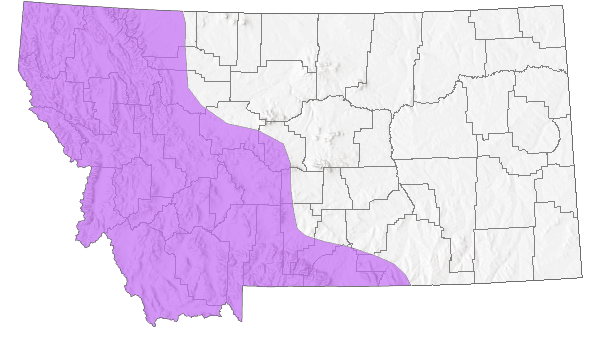
 Native
Native
Range Comments
BC, WA, ID and MT, s to CA, AZ, and NM. 0-7200 feet (FNA 2002).
Observations in Montana Natural Heritage Program Database
Number of Observations: 21
(Click on the following maps and charts to see full sized version)
Map Help and Descriptions
Relative Density

Recency
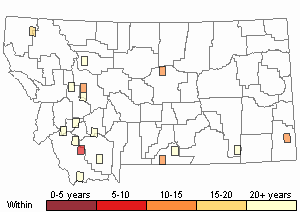
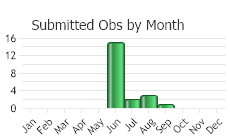
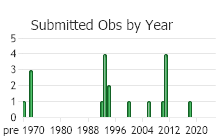
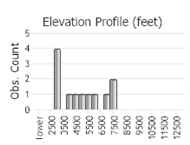 (Observations spanning multiple months or years are excluded from time charts)
(Observations spanning multiple months or years are excluded from time charts)
Habitat
Streambanks (Cronquist et al. 1977), moist to wet, often saline or alkaline meadows; valleys, montane (Lesica 2012).
(Lesica’s contribution from
Lesica et al. 2012. Manual of Montana Vascular Plants. BRIT Press. Fort Worth, TX)
Ecology
POLLINATORS The following animal species have been reported as pollinators of this plant species or its genus where their geographic ranges overlap:
Bombus vagans,
Bombus bifarius,
Bombus centralis,
Bombus fervidus,
Bombus flavifrons,
Bombus mixtus,
Bombus rufocinctus,
Bombus occidentalis,
Bombus griseocollis, and
Bombus suckleyi (Mayer et al. 2000, Colla and Dumesh 2010).
Reproductive Characteristics
Flowers: Tepals 8–20 mm in length, blue with yellow bases (FNA 2002), conspicuously veined, oblanceolate or slightly elliptic with rounded or emarginate apices; anthers 1-2(2.5) mm tall, the filaments partially united to form a column around the style, the column 3-6.5 mm in height; ovary at time of flowering ranging from 1.4-3 mm in height, heavily covered in tiny glandular hairs (Cronquist et al. 1977).
Fruit: Capsule globose, 3–6 mm tall (Lesica 2012); seeds slightly pitted, 1-1.8 mm across (Cronquist et al. 1977).
(Lesica’s contribution adapted from
Lesica et al. 2012. Manual of Montana Vascular Plants. BRIT Press. Fort Worth, TX)
Stewardship Responsibility
References
- Literature Cited AboveLegend:
 View Online Publication
View Online Publication Colla, S.R. and S. Dumesh. 2010. The bumble bees of southern Ontario: notes on natural history and distribution. Journal of the Entomological Society of Ontario 141:39-68.
Colla, S.R. and S. Dumesh. 2010. The bumble bees of southern Ontario: notes on natural history and distribution. Journal of the Entomological Society of Ontario 141:39-68. Cronquist, A., A. H. Holmgren, N. H. Holmgren, J. L. Reveal, and P. K. Holmgren. 1977. Intermountain flora: Vascular Plants of the Intermountain West, U.S.A. Volume 6: The Monocotyledons. New York, NY: Columbia University Press. 584 pp.
Cronquist, A., A. H. Holmgren, N. H. Holmgren, J. L. Reveal, and P. K. Holmgren. 1977. Intermountain flora: Vascular Plants of the Intermountain West, U.S.A. Volume 6: The Monocotyledons. New York, NY: Columbia University Press. 584 pp. Flora of North America Editorial Committee. 2002. Flora of North America North of Mexico. Vol. 26. Magnoliophyta: Liliidae: Liliales and Orchidales. New York, NY: Oxford Univ. Press. xxvi + 723 pp.
Flora of North America Editorial Committee. 2002. Flora of North America North of Mexico. Vol. 26. Magnoliophyta: Liliidae: Liliales and Orchidales. New York, NY: Oxford Univ. Press. xxvi + 723 pp. Lesica, P., M.T. Lavin, and P.F. Stickney. 2012. Manual of Montana Vascular Plants. Fort Worth, TX: BRIT Press. viii + 771 p.
Lesica, P., M.T. Lavin, and P.F. Stickney. 2012. Manual of Montana Vascular Plants. Fort Worth, TX: BRIT Press. viii + 771 p. Mayer, D.F., E.R. Miliczky, B.F. Finnigan, and C.A. Johnson. 2000. The bee fauna (Hymenoptera: Apoidea) of southeastern Washington. Journal of the Entomological Society of British Columbia 97: 25-31.
Mayer, D.F., E.R. Miliczky, B.F. Finnigan, and C.A. Johnson. 2000. The bee fauna (Hymenoptera: Apoidea) of southeastern Washington. Journal of the Entomological Society of British Columbia 97: 25-31.
- Additional ReferencesLegend:
 View Online Publication
View Online Publication
Do you know of a citation we're missing? Culver, D.R. 1994. Floristic analysis of the Centennial Region, Montana. M.Sc. Thesis. Montana State University, Bozeman. 199 pp.
Culver, D.R. 1994. Floristic analysis of the Centennial Region, Montana. M.Sc. Thesis. Montana State University, Bozeman. 199 pp. Lesica, P., M.T. Lavin, and P.F. Stickney. 2022. Manual of Montana Vascular Plants, Second Edition. Fort Worth, TX: BRIT Press. viii + 779 p.
Lesica, P., M.T. Lavin, and P.F. Stickney. 2022. Manual of Montana Vascular Plants, Second Edition. Fort Worth, TX: BRIT Press. viii + 779 p.
- Web Search Engines for Articles on "Idaho Blue-eyed-grass"





